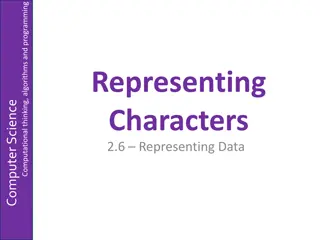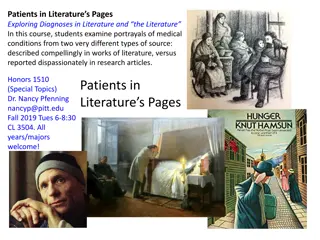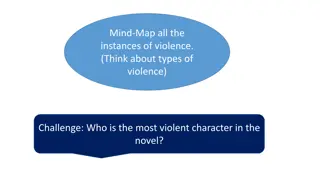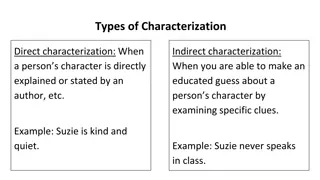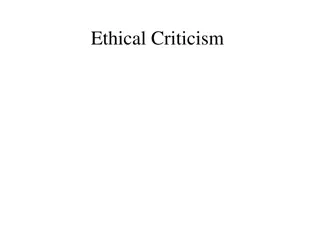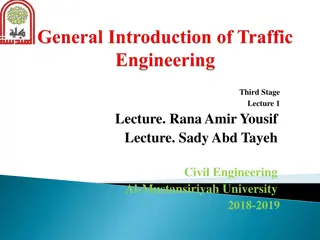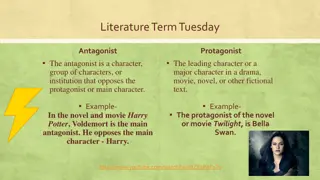Analyzing Characters through AECR Method in Literature Studies
The lesson involves analyzing characters through dialogue and incidents, supported by evidence and commentary using the AECR method. Students discuss vocabulary, choose impactful words, and present arguments such as whether Mary Maloney in "Lamb to the Slaughter" is sympathetic. The Assertion, Evidence, Commentary, and Relevance help structure their analysis, enhancing critical thinking skills.
Download Presentation

Please find below an Image/Link to download the presentation.
The content on the website is provided AS IS for your information and personal use only. It may not be sold, licensed, or shared on other websites without obtaining consent from the author.If you encounter any issues during the download, it is possible that the publisher has removed the file from their server.
You are allowed to download the files provided on this website for personal or commercial use, subject to the condition that they are used lawfully. All files are the property of their respective owners.
The content on the website is provided AS IS for your information and personal use only. It may not be sold, licensed, or shared on other websites without obtaining consent from the author.
E N D
Presentation Transcript
Bellringer Bellringer Take out Cycle 4 Part 3 vocabulary words. You will also need your FFA text for later in the lesson. Discuss with your group a few words that you have chosen Make sure the words meanings reflect the meaning of the word part. Afterwards, choose one word that WOWs your classmates. Record on a sheet at the table in your baskets.
Outcomes: Outcomes: I can analyze how lines of dialogue or incidents reveal aspects of a character. I can use my own thoughts and ideas (commentary) to explain how my evidence supports my assertion.
AECR A= Assertion Here you make your argument or state your claim It is a clearly stated expression of purpose This is what you will back up throughout your response E= Evidence Evidence from the text that supports your Assertion C=Commentary Here you explain why the Evidence is important enough to prove your Assertion Your opinion; your thoughts and ideas R= Relevance Wraps it up Ties everything together
Sample AECR Prompt: Sample AECR Prompt: Did Dahl craft a sympathetic character in Mary Maloney?
Assertion: Assertion: Roald Dahl did not create Mary Maloney as a sympathetic character in Lamb to the Slaughter.
Evidence: Evidence: Roald Dahl did not create Mary Maloney as a sympathetic character in Lamb to the Slaughter. At the end of the story Mary is described as giggly while the officers, as planned by Mary, are eating the leg of lamb that is used as the murder weapon (8).
Commentary: Commentary: Mary is initially portrayed as a loving and doting wife in the exposition of the text. When she kills her husband in a fit of rage, or is it insanity after discovering he is going to leave her, the reader certain feels her agony. However, from her intentional plans of having the police eat the murder weapon to giggling that she may very well evade capture or arrest, one cannot possibly view Mary as being truly sorry for her actions.
Relevance: Relevance: In the end, Dahl s character Mary Maloney showed little to no remorse for her actions; hence, she deserves no sympathy.
AECR Question: AECR Question: Is Charley better off as a result of the surgery?
Process of Brainstorming AECR Process of Brainstorming AECR Question: Question: 1. Decode the prompt. 2. Use graphic organizer to identify their answer & pull evidence. 3. Begin drafting.
Closure: Closure: Explain to your elbow partner the purpose of commentary in a AECR response. Be ready to share!
Independent Practice: Independent Practice: Compose a response to AECR prompt: (Response will be due tomorrow) Is Charley better off as a result of the surgery? Continue to read and annotate Flowers for Algernon through Progress Report 11 Read Independently




